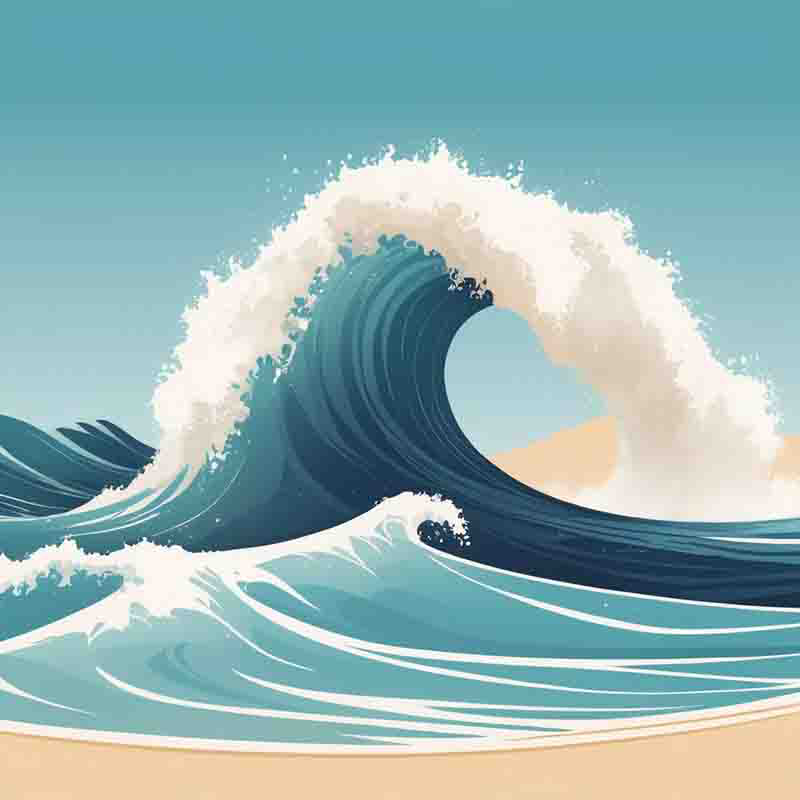Caprica Terminology
Introducing the ultimate A-Z guide to the Costa da Caparica! Whether you're a first-time visitor or a regular beach lover, this glossary will help you discover the best of this stunning coastal paradise.
JBS Beta Version
Beta Version
Introducing the ultimate A-Z guide to the Costa da Caparica! Whether you're a first-time visitor or a regular beach lover, this glossary will help you discover the best of this stunning coastal paradise.
Atlantic Coast: The long stretch of coastline that defines Costa da Caparica, known for its powerful waves and golden beaches.
Arriba Fóssil: A protected fossil cliff formation that offers stunning views and geological significance.
Almada: The municipality to which Costa da Caparica belongs, located just south of Lisbon.
Beaches: Over 26 km of coastline, attracting surfers, sunbathers, and tourists.
Boardwalk: A scenic wooden path along the beach, perfect for walking, jogging, and cycling.
Bacalhau: Portugal’s famous dried and salted codfish, commonly served in restaurants near Costa da Caparica.
Caparica Surf: A hotspot for surfing, with consistent waves and numerous surf schools.
Chiringuitos: Small beach bars and restaurants offering fresh seafood and drinks.
Costa da Caparica Train: A seasonal tourist train that runs along the beach, stopping at key locations.
Dunas: Sand dunes found along the coast, playing an essential role in protecting the environment.
Doca Pesca: The local fishing dock where fresh fish arrives daily.
Dolphins: Occasionally spotted off the coast, especially during boat tours.
Esplanadas: Open-air terraces of cafés and restaurants with ocean views.
Ericeira Influence: A reference to the nearby surfing town that shares some of Costa da Caparica’s wave culture.
Estuário do Tejo: The Tagus River estuary, a crucial ecosystem near Costa da Caparica.
Fishermen’s Boats: Traditional wooden boats used by local fishermen.
Forte de São Sebastião: A historic fort built to defend the coast from pirates and invaders.
Fado Nights: Some local restaurants offer live performances of Portugal’s soulful traditional music.
Gastronomy: A mix of fresh seafood, grilled fish, and traditional Portuguese flavors.
Golf: The Aroeira Golf Resort, located near Costa da Caparica, is a popular destination for golf lovers.
Hiking Trails: Paths that run along the Arriba Fóssil cliffs, offering scenic coastal views.
Hostels: Affordable accommodations that attract backpackers and surfers.
Historic Fishing Methods: Some local fishermen still use traditional techniques passed down through generations.
Igreja Paroquial de Caparica: The main parish church of Costa da Caparica.
Ilha do Pessegueiro: A small island off the coast, known for its historical significance.
International Surf Competitions: Occasionally held in Costa da Caparica, drawing top surfers.
Jogging Paths: Designated routes along the boardwalk and beaches.
Jardim Urbano: A green space in Costa da Caparica with playgrounds and picnic areas.
Jangada: A type of traditional fishing raft occasionally seen along the coast.
Kite Surfing: A growing sport in Costa da Caparica due to its strong winds.
Kayaking: Popular in calmer waters near the Tagus River.
Kelp Forests: Underwater ecosystems that support marine biodiversity.
Lisbon Proximity: Just a 20-minute drive from the capital, making it a popular getaway.
Lagoa de Albufeira: A nearby lagoon known for windsurfing and birdwatching.
Local Markets: Fresh fish and produce markets offering regional specialties.
Miradouros: Scenic viewpoints overlooking the Atlantic and Arriba Fóssil cliffs.
Moço Beach: A less crowded, serene spot along the Costa da Caparica shoreline.
Mediterranean Climate: Hot summers and mild winters, making it a year-round destination.
Nazaré Connection: Though further north, Costa da Caparica shares some of the big-wave surfing culture of Nazaré.
Nature Reserve: The nearby Arriba Fóssil Protected Landscape, preserving biodiversity and geological formations.
Oysters: A delicacy harvested from the Tagus estuary and served in local restaurants.
Oceanfront Villas: Exclusive accommodations offering stunning sea views.
Outdoor Yoga: A popular beach activity, especially at sunrise and sunset.
Praia do Rei: One of the many beaches in Costa da Caparica, known for its surf-friendly waves.
Pescadores: The local fishing community that has been part of Costa da Caparica’s identity for centuries.
Public Transport: Easy access via bus or ferry from Lisbon.
Queijo da Azeitão: A regional cheese enjoyed with local wines.
Quinta de Santana: A nearby vineyard producing quality Portuguese wines.
Quiet Beach Spots: Hidden sections along the coastline for those seeking relaxation.
Ribeira de Caparica: A small stream that flows through the area.
Rock Formations: Found along certain parts of the coast, adding to its geological interest.
Surf Schools: Many options for beginners and experienced surfers.
Street Markets: Selling local crafts, produce, and souvenirs.
Tasca: A small, family-run Portuguese eatery serving traditional dishes
Tróia Peninsula: A short trip away, featuring beautiful beaches and dolphin-watching tours.
Tide Pools: Found along rocky sections of the coast, home to small marine life.
Undercurrents: Can be strong in some areas, requiring caution while swimming.
Urban Expansion: Rapid growth in recent years, leading to new developments.
Vegetation: Coastal plants adapted to sandy, salty conditions.
Volleyball: A popular sport on many beaches.
Vila Nova de Caparica: A small residential area near the beach.
Water Sports: Includes surfing, bodyboarding, and windsurfing.
Wildlife: Birds, fish, and other marine species found in the area.
Walking Trails: Scenic routes along the coast and cliffs.
Xávega Fishing: A traditional method still practiced by local fishermen.
Xistos: A type of rock found in geological formations along the coast.
Xácaras: A term for small fishing villages, historically found near Costa da Caparica.
Yoga on the Beach: Popular sunrise and sunset activity.
Year-Round Surfing: Costa da Caparica offers good waves in all seasons.
Zimbros: A type of juniper tree found in coastal areas.
Zonal Winds: Winds that affect surfing conditions.
Zé da Mouraria: A well-known restaurant famous for its Portuguese dishes.
Explore the Costa da Caparica alphabet and truly connect with the heart of Costa da Caparica.
